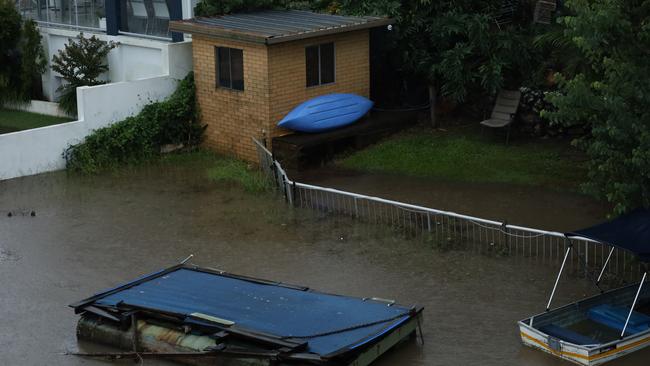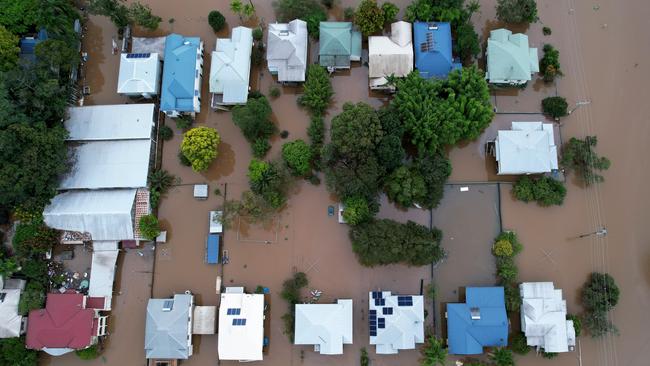Triple La Nina could result in insurance embargoes for flood cover
As Australia braces for another wet summer, some may be facing a new, and expensive, problem.
Environment
Don't miss out on the headlines from Environment. Followed categories will be added to My News.
While a very likely third year of La Niña could bring another year of renewed flood risks and increased rainfall, homeowners looking to protect their home from flood damage could be denied coverage.
In a practice called an insurance embargo, insurers can bar homeowners from taking out new policies against natural disasters like floods, cyclones and fires if an incident is already occurring or imminent.
Speaking to the Courier Mail, the managing director for insurance provider, EBM RentCover, Sharon Fox-Slater said that restrictions on insurance were “normal practice”. Customers can also be subjected to a “no-claims period,” which may leave them unprotected in the event of an incident.

The insurer had implemented embargoes earlier this year after swathes of south east Queensland suburbs were inundated with flooding. However, Ms Fox-Slater said that EMB RentCover clients who already had cover before the floods, were not impacted by the embargoes.
“This was because the risk was either already occurring or imminent, and insurance policies do not typically offer cover for known or likely events,” she said.
When purchasing flood insurance, insurers will use the National Flood Information Database (NFID) to determine a home’s flood risk and associated premium in order to insure a home. Other factors include the home’s location, building type and claims history.
‘Extortionate rates for flood prone homes’
This can also result in homeowners living in floodprone areas being hit with extortionate prices, should they choose to take out insurance policies for flood damage.
In March this year, Mayah and Sam Long – a Queensland couple who live in a floodprone area of Ipswich near Brisbane – told the Australian Financial Review they were quoted from $4000-plus, to over $10,000 when contemplating flood cover for their small timber house. The exorbitant costs meant they decided to ultimately go without, with their home thankfully avoiding rising floodwater by a mere few hundred millimetres during the March floods.
“For a very rare event that won’t structurally affect our house … we think we’re better off saving the $50 a week difference from opting out of flood cover and funding the repairs ourselves,” said Mr Long.

According to the Insurance Council of Australia, more than 230,000 claims have been lodged, totalling $5.13 billion as a result of the southeast Queensland and NSW floods. However, as of July only 36.3 per cent the claims have been processed.
In March, NSW Premier Dominic Perrottet admitted that the price of flood protection prevented homeowners from taking out policies which left them vulnerable in the case of severe weather events.
“We have to have an open discussion around this,” he told Sunrise.
“There are many outlying communities here in the Northern Rivers who don’t have any insurance because it’s just too expensive.”

A summer of wet weather
This comes as the Bureau of Meteorology (BOM) announced that La Niña would likely hit Australia for the third consecutive year in a row. On Tuesday, the Bureau changed their prediction from La Niña Watch” to a “La Niña Alert,” which means the likelihood of the weather event returning is three times the normal risk.
This would increase the chances of heavy rains and increased flooding.
“As many Australians in the east of the country know, soils are wet, rivers are high and the dams are full and with this outlook of above average rainfall coming, there is an elevated risk of flooding across the east of the country,” said BOM senior meteorologist Jonathan How.
This year however, La Niña would clash with a negative Indian Ocean Dipole (IOD) – again, for the second consecutive year.
While both weather events result in above-average rainfall, the occurrence of a negative IOD and La Niña in 2010 resulted in a year of record flooding for South East Queensland.
Originally published as Triple La Nina could result in insurance embargoes for flood cover





